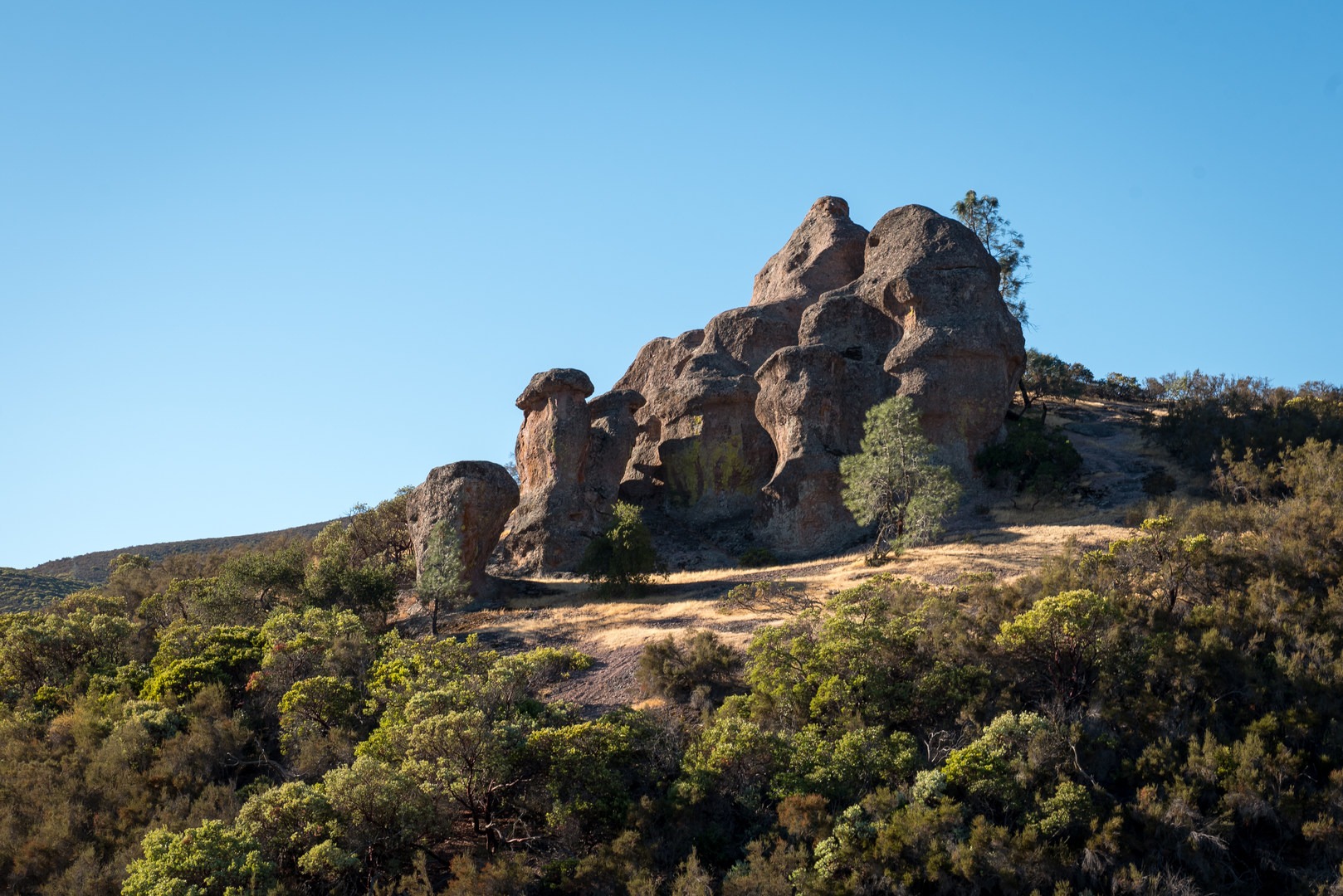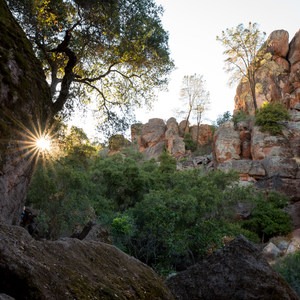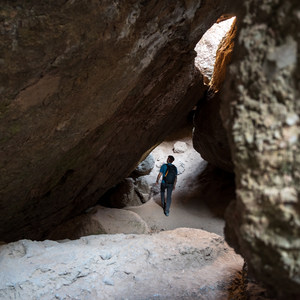You are here
The region west of the Bear Gulch Reservoir and southwest of the lower High Peaks Trail in Pinnacles National Park is full of remote rock features offering quality climbing, beautiful views, reduced crowds, and an exciting backcountry feel. It is an expansive area covered in great detail in Brad Young's "A Climber's Guide to Pinnacles National Monument," which could keep you occupied for seasons of climbing.
Access begins at the Bear Gulch Day Use Area and follows either the Moses Spring Trail to the Bear Gulch Reservoir and beyond or the High Peaks Trail to the Deserted Valley and its surrounding areas. Major formations near the reservoir include Crud and Mud, The Frog, and The Hand, all offering multiple fun climbing routes. In the vicinity of the High Peaks Trail and Deserted Valley, formations range from sizeable walls like Pinch or Lynch Wall to curiously-shaped individual formations like The Unmentionable or The Anvil. Many of the climbs in this area are trad climbs, though they will frequently have bolted anchors and/or intermediate bolts at key protection locations.
Classic routes among these formations include:
The Anvil (5.3 R)
The Unmentionable (5.5)
Salathe Route (5.6 R)
The Carousel (5.10b)
The Edge of Sundown (5.10b R)
Get a Grip (5.10b)
Love Line (5.10b)
Carpal Tunnel Syndrome (5.10c)
Rock climbing has a long history in Pinnacles, which has seen first ascents throughout the development of the sport in the United States from the 1930s through modern times. The local climbing community has a strict ground-up bolting policy forbidding bolting on rappel. Resulting sport climbs have a natural flow but do not always offer convenient protection on crux moves. Though the volcanic rock is not as robust as the granite found in Yosemite and the Sierra Nevada, numerous mineral crystals and other features make for routes that often give climbers many sequencing choices. These crystals are prone to being dislodged, however, so both climbers and belayers in Pinnacles should always wear helmets. Experienced Pinnacles climbers try to avoid using the crystals as often as possible, instead looking for grip in the rock between the knobs.








Comments
Sign In and share them.